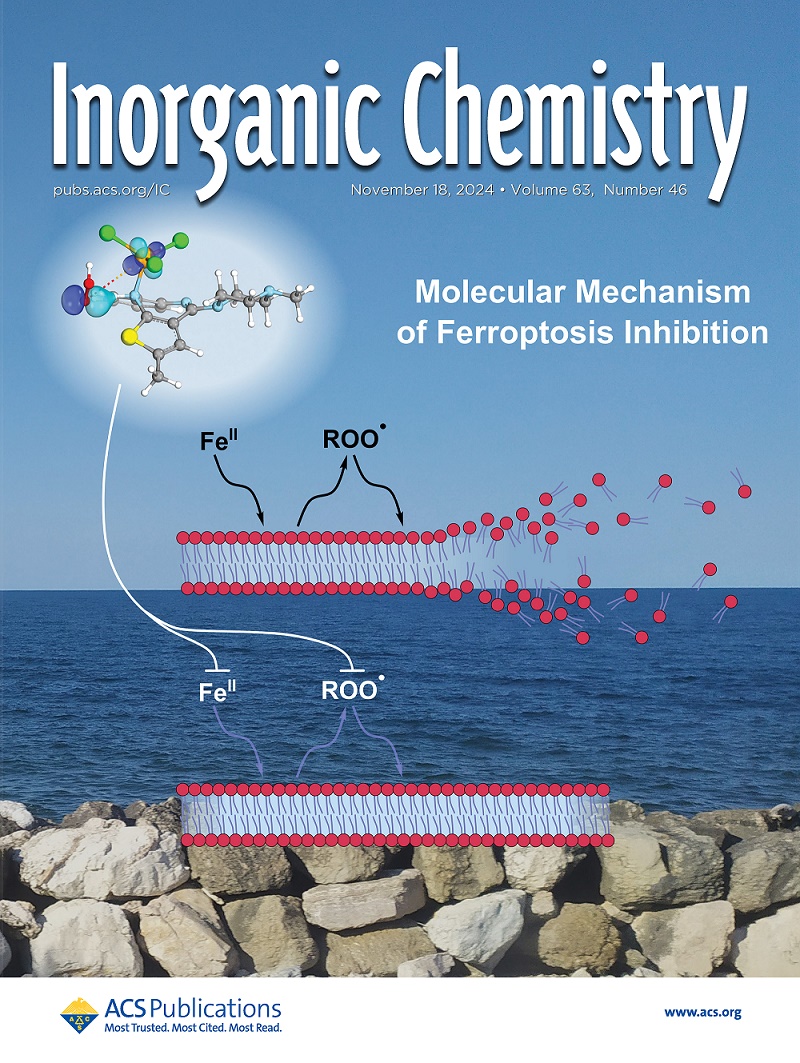Synthesis and Characterization of Bimetallic Copper(I) Complexes Supported by a Hexadentate Naphthyridine-Based Macrocycle Ligand
IF 4.3
2区 化学
Q1 CHEMISTRY, INORGANIC & NUCLEAR
引用次数: 0
Abstract
Herein, we report the synthesis, characterization, and binding properties of a new ligand, N,N′-di-tert-butyl-3,7-diaza-1,5(2,7)-1,8-naphthyridinacyclooctaphane (tBuN6), with copper (I), CuI, centers. We demonstrate the flexibility and the ability of tBuN6 to adopt various conformations in solution and when coordinated to CuIcenters. NMR studies exhibit the labile coordination nature of CuI. However, the lability of the complexes is blocked by counterion exchange, which enables the use of less coordinating solvents such as tetrahydrofuran (THF) and avoids using acetonitrile. Thus, the exchange of [BF4]− with tetrakis 3,5-bis(trifluoromethyl)phenyl borate, [B(ArF)4]−, in 1·BF4, [Cu2(MeCN)2(tBuN6)][BF4], generates 1·B(ArF)4, which is stable in THF and reacts under a CO atmosphere to generate a syn,syn bis(carbonyl) complex. This complex is sufficiently stable in solution under CO and Ar atmosphere to be characterized by NMR and IR spectroscopy, the latter revealing two stretching bands for the CO bound to the CuI–centers at 2102 and 2088 cm–1.

六齿萘基大环配体负载双金属铜配合物的合成与表征
本文报道了一种以铜(I), CuI为中心的新型配体N,N ' -二叔丁基-3,7-二氮-1,5(2,7)-1,8-萘啶环七烷(tBuN6)的合成、表征和结合性能。我们展示了tBuN6在解决方案中采用各种构象的灵活性和能力,以及与cucenter协调时的能力。核磁共振研究显示了CuI的不稳定配位性质。然而,配合物的稳定性被反离子交换所阻断,这使得可以使用较少的配位溶剂,如四氢呋喃(THF),并避免使用乙腈。因此,在1·BF4, [Cu2(MeCN)2(tBuN6)][BF4]中,[BF4]−与四akis 3,5-二(三氟甲基)苯硼酸盐[B(ArF)4]−交换,生成1·B(ArF)4,其在THF中稳定,并在CO气氛下反应生成syn,syn二(羰基)配合物。该配合物在CO和Ar气氛下具有足够的稳定性,通过核磁共振和红外光谱对其进行了表征,后者在2102和2088 cm-1处显示出CO与cu -中心结合的两条伸展带。
本文章由计算机程序翻译,如有差异,请以英文原文为准。
求助全文
约1分钟内获得全文
求助全文
来源期刊

Inorganic Chemistry
化学-无机化学与核化学
CiteScore
7.60
自引率
13.00%
发文量
1960
审稿时长
1.9 months
期刊介绍:
Inorganic Chemistry publishes fundamental studies in all phases of inorganic chemistry. Coverage includes experimental and theoretical reports on quantitative studies of structure and thermodynamics, kinetics, mechanisms of inorganic reactions, bioinorganic chemistry, and relevant aspects of organometallic chemistry, solid-state phenomena, and chemical bonding theory. Emphasis is placed on the synthesis, structure, thermodynamics, reactivity, spectroscopy, and bonding properties of significant new and known compounds.
 求助内容:
求助内容: 应助结果提醒方式:
应助结果提醒方式:


